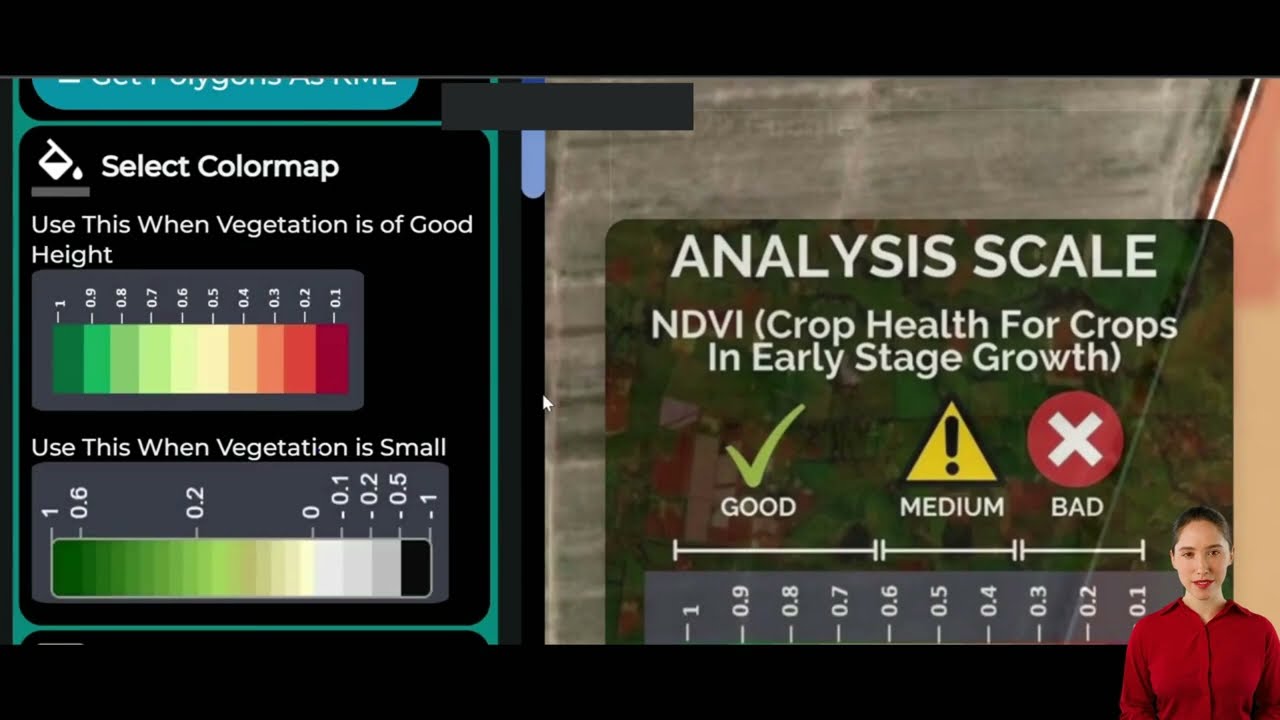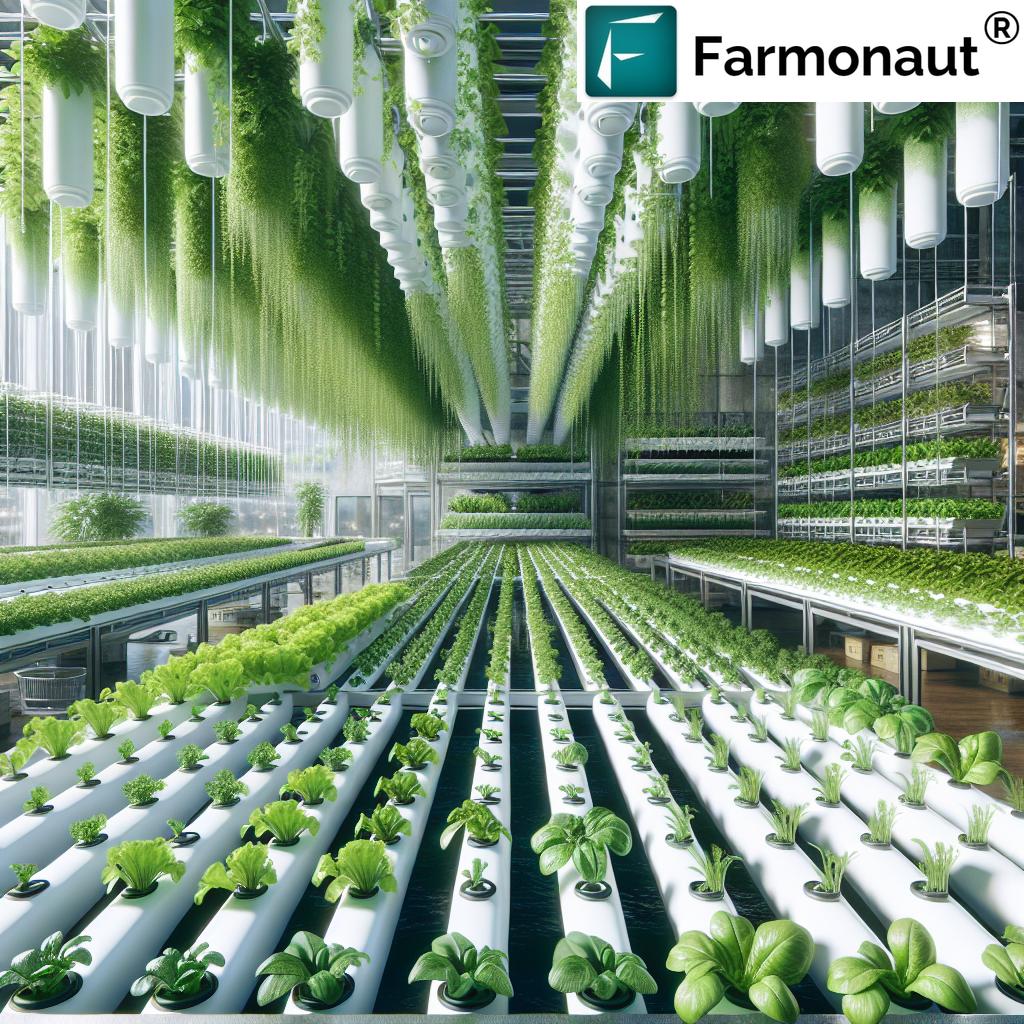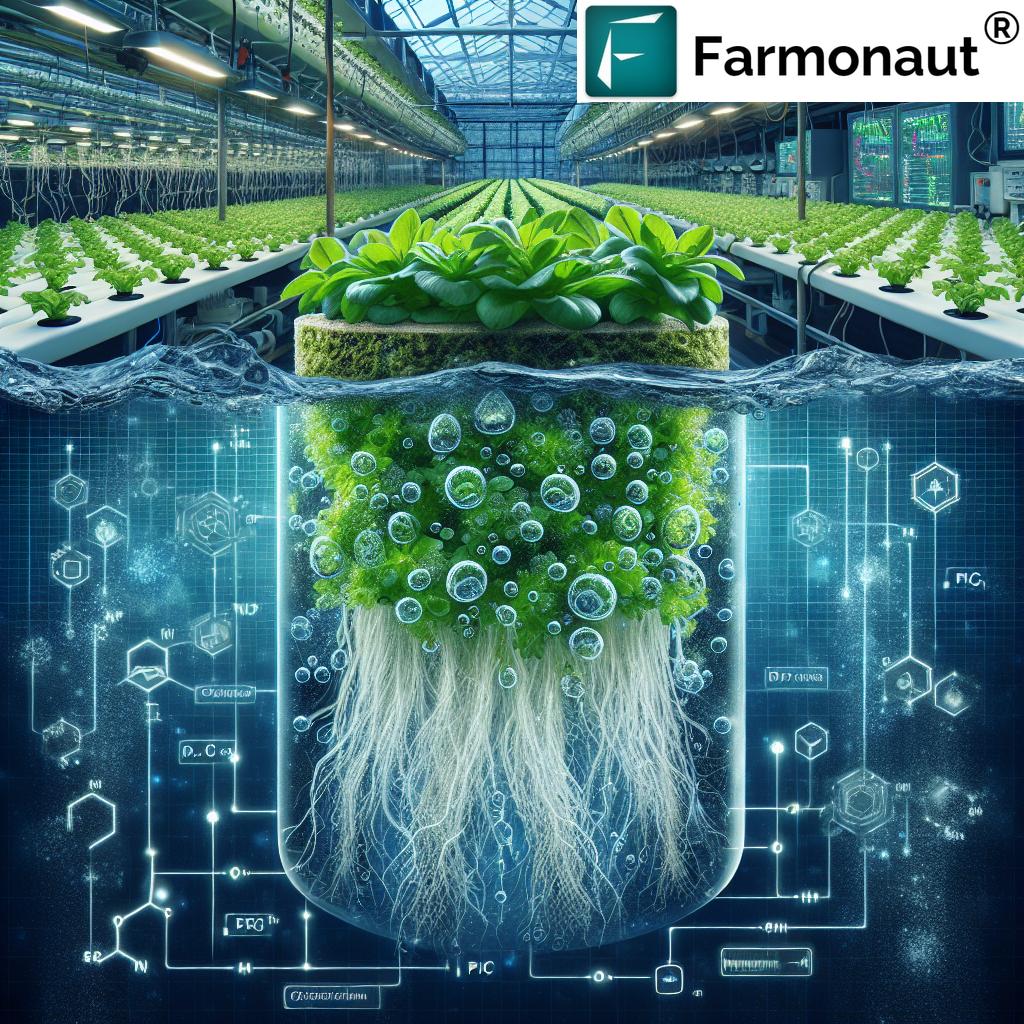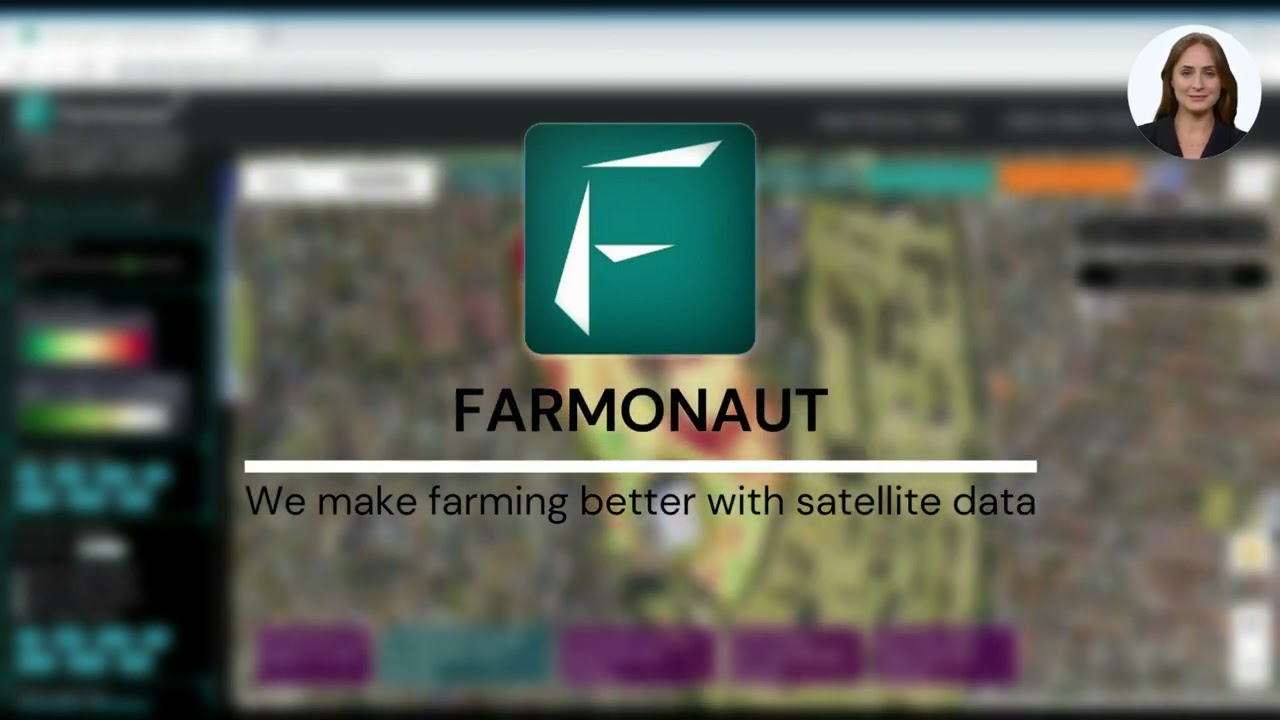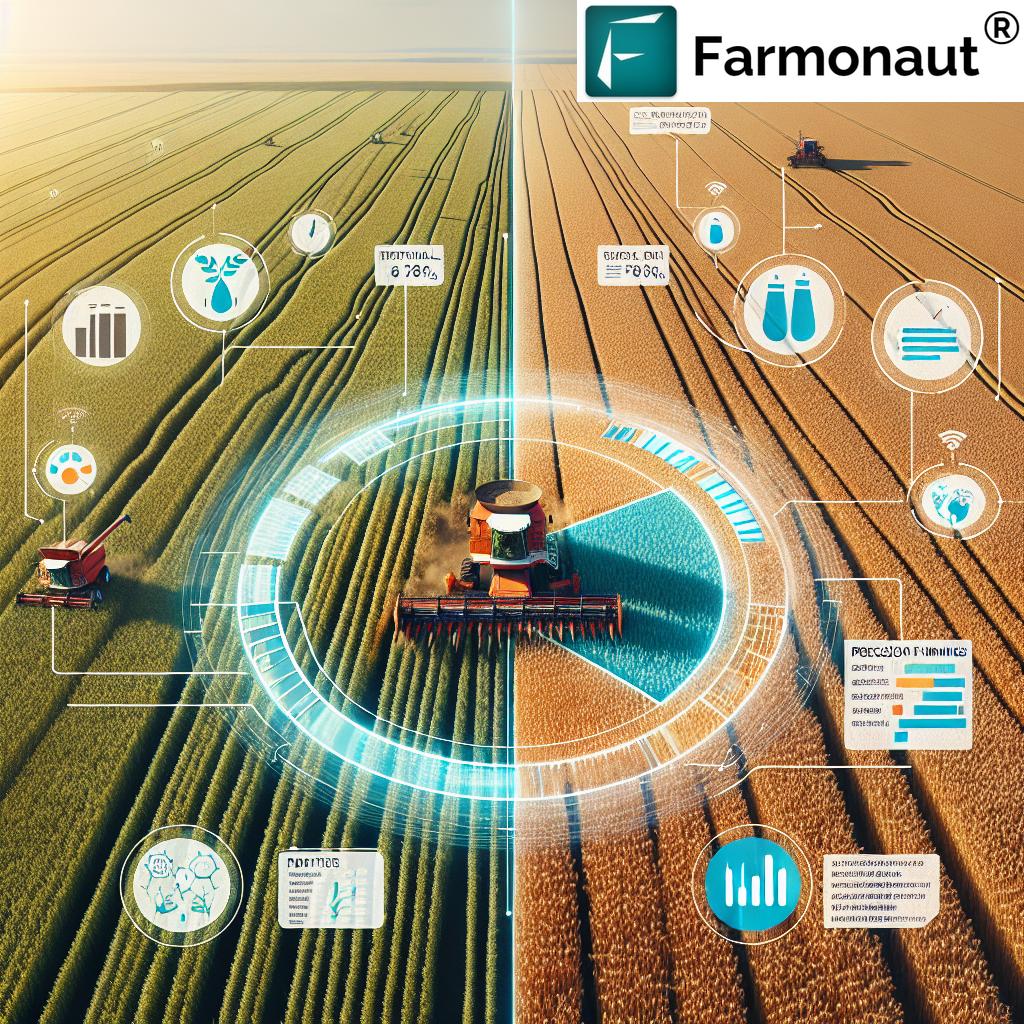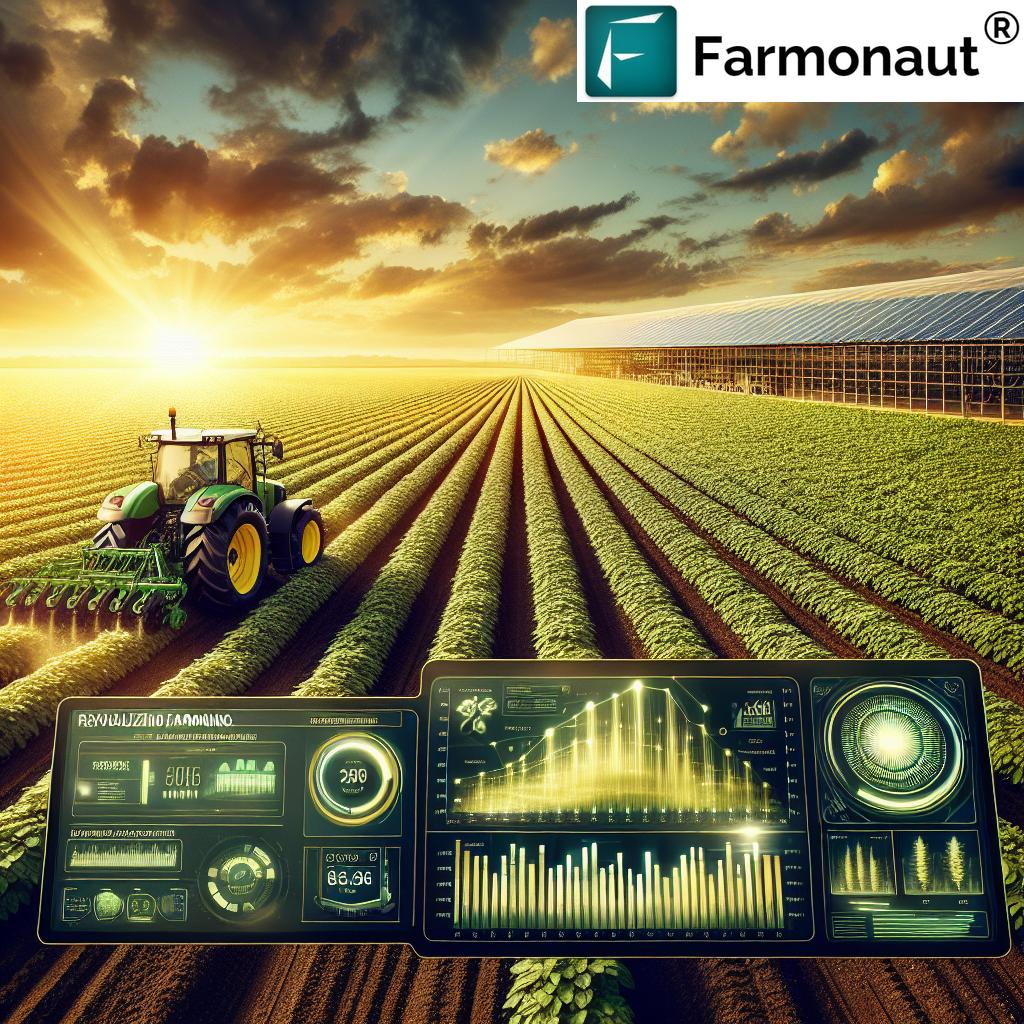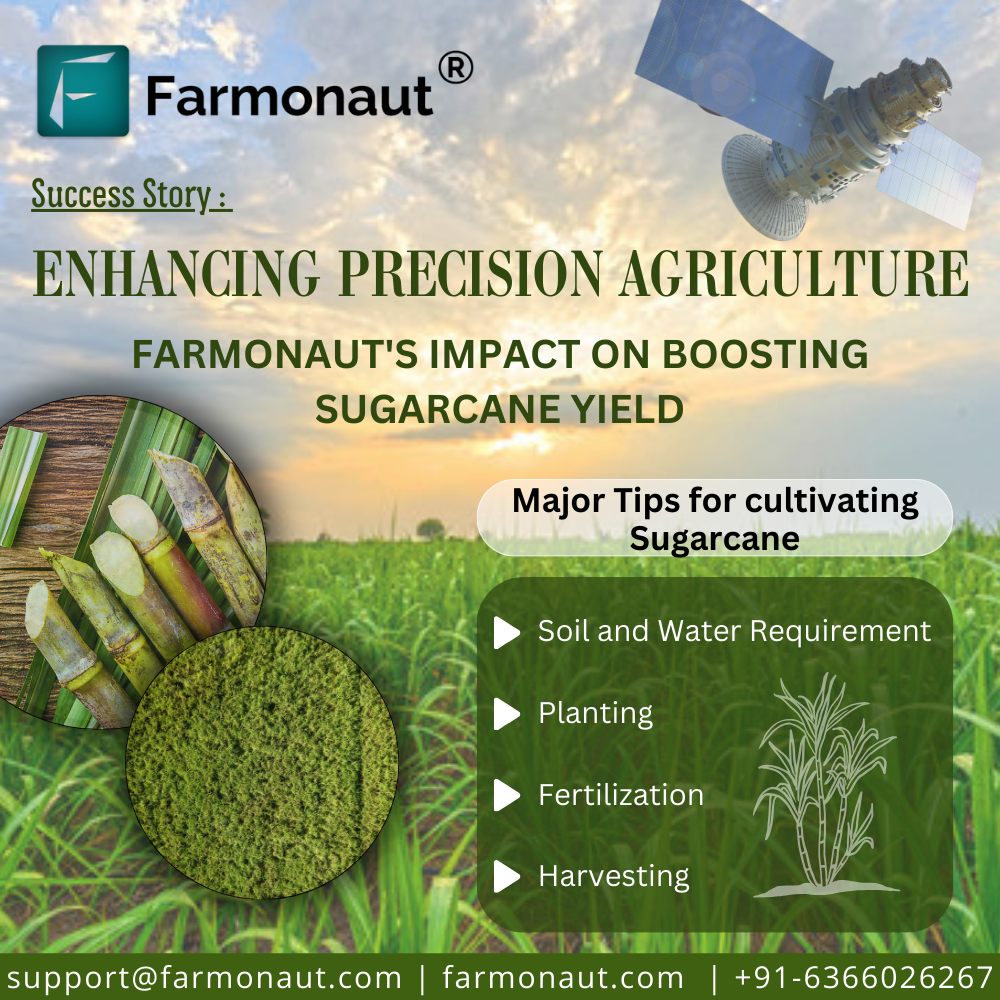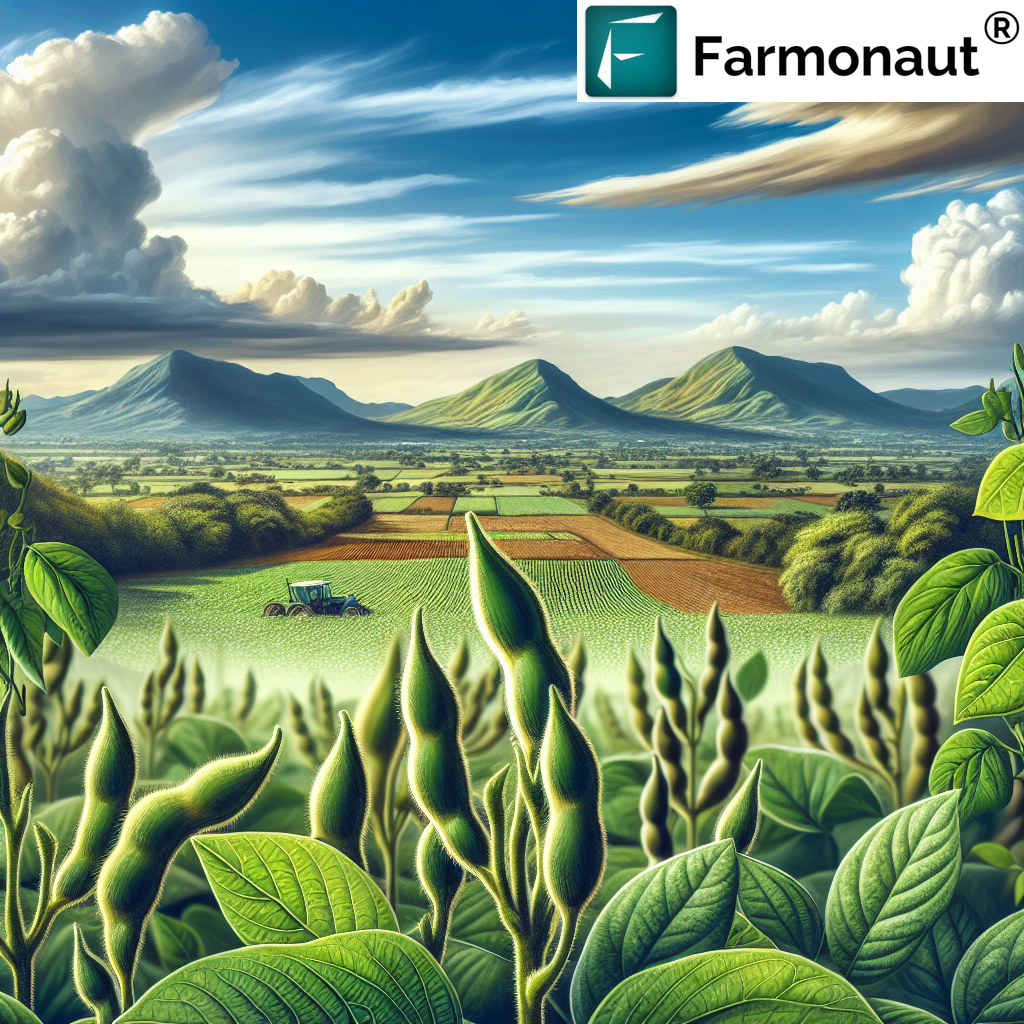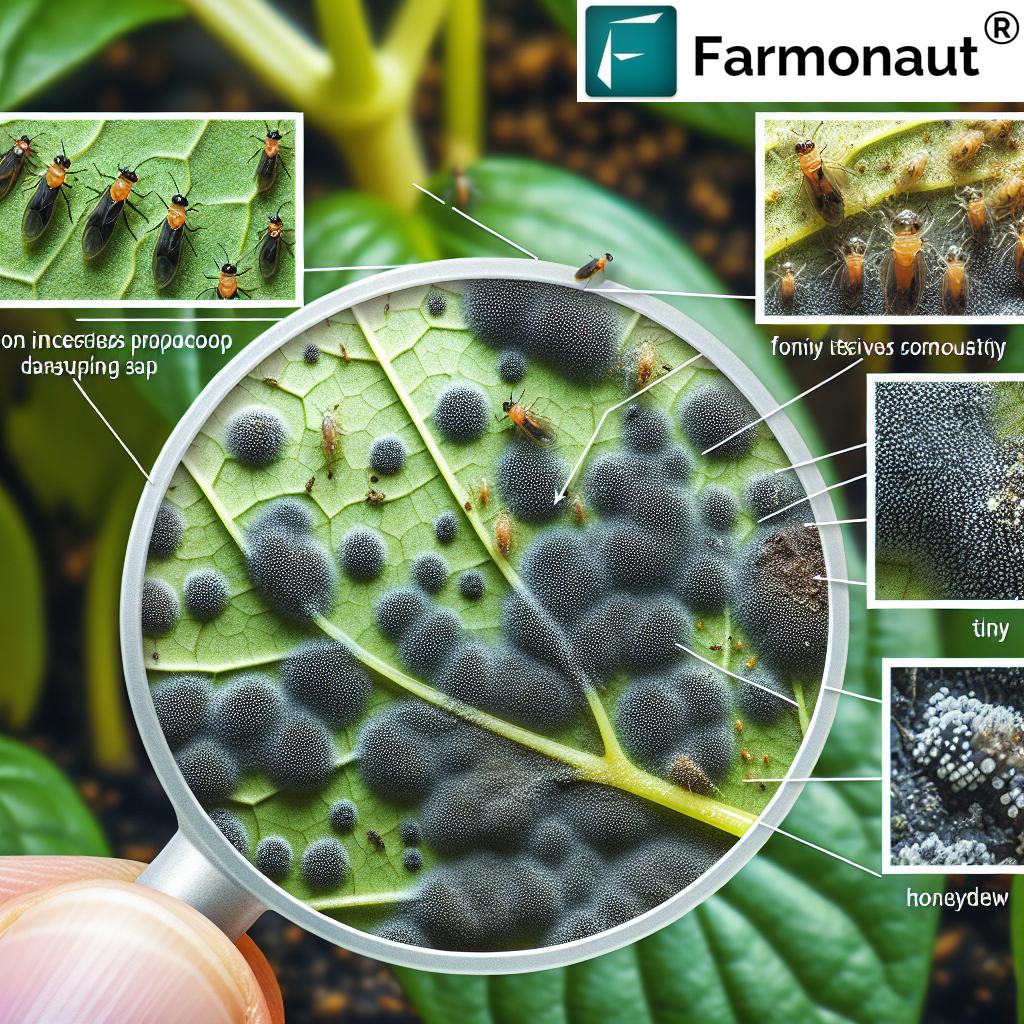Hydroponic Grow System: Unlock 7 Shocking Benefits!
Table of Contents
- Summary & Introduction
- Understanding Hydroponics
- Types of Hydroponic Systems
- 7 Shocking Benefits of Hydroponic Systems
- Comparative Benefits Table: Hydroponic vs. Soil-Based Systems
- Challenges & Considerations in Hydroponic Farming
- Advancements in Hydroponic Technology
- Hydroponic Farming Applications: Urban, Non-Arable, and Forestry
- Farmonaut: Empowering Sustainable Agriculture Solutions
- Frequently Asked Questions (FAQ)
- Conclusion
“Hydroponic systems use up to 90% less water than traditional soil farming, revolutionizing urban agriculture efficiency.”
Summary & Introduction
Hydroponic growing systems represent a truly transformative approach to modern agriculture. By enabling plant cultivation without soil and providing essential nutrients through water-based solutions, hydroponic systems unlock unprecedented opportunities for both efficiency and sustainability. Compared to traditional farming, hydroponics offers remarkable advantages in resource utilization, space optimization, and enables continuous, year-round production, crucial for meeting growing food demands, especially in urban and controlled environments.
At Farmonaut, we are passionate about driving sustainability and precision in agriculture. Our advanced technology solutions—including satellite-powered real-time farm monitoring, AI-driven advisories, and blockchain-based traceability—are designed to help every grower, from urban hydroponic farmers to large-scale producers, optimize their yields, reduce costs, and protect the environment.
Let’s explore in detail how hydroponic systems unlock 7 shocking benefits that are changing the landscape of food production!
Understanding Hydroponics: The Foundation of Efficient Crop Cultivation
Hydroponics involves growing plants using a nutrient-rich water solution, dispensing with the need for soil altogether. By relying on precise control over nutrient delivery, water quality, and environmental conditions, we’re able to mitigate the risks posed by soil-borne pests and diseases, promote healthier plant growth, and substantially increase yields.
Various crops including leafy greens (lettuce, spinach), herbs (basil, mint), and even certain fruits and vegetables (tomatoes, strawberries, peppers) thrive under hydroponic methods. The system eliminates limitations imposed by poor or unavailable soil, offers more efficient resource utilization, and allows us to cultivate crops in spaces previously considered unusable, such as rooftops and urban environments.
Key Takeaway: Hydroponics is not just a farming technique—it’s a path toward sustainable, scalable, and controlled environment agriculture that can literally reshape our cities and farmlands.
Types of Hydroponic Systems: Methods of Precision and Innovation
Let’s dive into the most popular hydroponic system types, each with unique characteristics suiting different crops and operation sizes:
- Deep Water Culture (DWC): In DWC systems, plant roots are suspended in an oxygenated, nutrient-rich water reservoir. The large volume of water provides a buffer against rapid changes in temperature, pH, and nutrient composition. It’s an excellent environment for stable growth and is widely used for crops like leafy greens.
- Nutrient Film Technique (NFT): Here, a thin film of nutrient solution flows continuously over the roots, supported by a gently sloped channel. NFT systems are highly efficient for growing lightweight crops such as lettuce and fresh herbs.
- Aeroponics: In aeroponics, plant roots are suspended in air and misted intermittently with a tailored hydroponics nutrient solution. This method maximizes nutrient uptake, speeds up growth, and uses much less water than traditional approaches.
- Wick System: Suitable for small-scale operations, the wick system is passive and energy-free. A wick draws nutrient solution from a reservoir up to the plant roots, providing steady nourishment for plants that don’t require rapid nutrient changes.
Each hydroponic system can be adapted to specific crops, environments, and space constraints. For instance, vertical farming techniques employing stacked layers of NFT or aeroponic systems are a popular choice in urban hydroponic farming, enabling us to grow more in less space.
Hydroponic Grow System: 7 Shocking Benefits Revealed!
Modern hydroponic systems are redefining sustainable agriculture by providing these eye-opening benefits:
-
Water Efficiency
Our hydroponic systems use up to 90% less water than traditional soil agriculture. The recirculating nature of hydroponic solutions ensures almost no waste, which is a critical advantage for regions facing water scarcity and for urban hydroponic farming. This makes hydroponics an efficient solution for high-density food production in limited environments. -
Space Optimization & Vertical Growth
By leveraging advanced vertical farming techniques, hydroponic farms can yield up to 4 times more crops per square meter. Stacked layers and modular setups allow us to double or triple our output compared to traditional layouts, making hydroponics ideal for urban environments and small spaces. -
Reduced Use of Pesticides and Chemicals
As hydroponics is a controlled environment agriculture system, exposure to soil-borne pests and diseases is almost eliminated. This dramatically reduces—or even removes—the need for chemical pesticides and herbicides, resulting in cleaner, safer produce and lowering our environmental impact. -
Year-Round Crop Production
By monitoring and adjusting environmental conditions—such as temperature, humidity, and artificial lighting—hydroponic systems enable continuous, year-long production. Growers are no longer limited by seasonal changes or unfavorable weather, securing steady supplies of fresh food. -
Higher Yields and Faster Growth Rates
The precise delivery of nutrients and oxygen ensures our plants experience optimal growth. Hydroponic farms routinely achieve 25-50% faster growth and up to double the crop yield compared to soil farming. These high yields are vital for maximizing returns in both urban hydroponic farming and large commercial setups. -
Efficient Resource Utilization
Not only do hydroponics minimize water waste, but these systems also allow for careful nutrient management. Farmers can reuse nutrient solutions, apply only what is required, and eliminate the run-off issues caused by traditional fertilizer application. -
Expanding Crop Production to Non-Arable Lands
Hydroponic technology empowers us to produce healthy crops in limited areas—including rooftops, basements, and even deserts. This potential to utilize non-arable land is a game-changer for food security in space-constrained areas.
“Urban hydroponic farms can yield up to 4 times more crops per square meter compared to conventional farming methods.”
Comparative Benefits Table: Hydroponic vs. Soil-Based Systems
To visualize the advantages of hydroponic systems over traditional soil-based farming at a glance, here’s a detailed comparison table:
| Factor | Hydroponic Grow System (Estimated Values) | Traditional Soil-Based System (Estimated Values) | Benefit Highlight |
|---|---|---|---|
| Water Usage | Up to 90% less | High; large evaporation & runoff | Conserves water, ideal for regions with scarcity |
| Space Efficiency | 4x higher yields/sq. meter with vertical farming | Limited by horizontal land area | Maximizes crop output on limited land |
| Growth Rate | 25–50% faster | Standard | Rapid, market-responsive production |
| Pesticide Usage | Up to 70% reduction | Frequent use needed | Cleaner, safer produce |
| Crop Yield | Up to 2x higher | Standard yields | Maximized utilization/performance |
| Nutrient Control | Highly precise | Variable, hard to monitor | Reduced risk of deficiencies & toxics |
| Urban Suitability | Excellent (rooftops, warehouses, indoors) | Limited or unworkable | Enables local, fresh urban food supply |
Challenges & Considerations in Hydroponic Farming
While hydroponic crop production offers a host of formidable benefits, it’s not without its challenges. Here are the main considerations we need to address:
- Initial Setup Costs: Constructing hydroponic systems requires investment in infrastructure—growing beds, pumps, reservoirs, LED lights, and environmental controls. Over time, these costs can be offset by enhanced yields and resource savings, but initial entry can be significant for small producers.
- Technical Expertise: Effective hydroponic farming is a science. We must understand plant biology, nutrient delivery, system maintenance, and environmental control. Training and education are critical for long-term operational success.
- Energy Consumption: Many hydroponic systems (especially those fully indoors or using artificial lighting) can consume more energy than traditional methods. The use of renewable energy sources, such as solar panels, is highly recommended to bolster sustainability and reduce operational carbon footprints.
- Nutrient Management: Maintaining a precise nutrient balance is vital. Automated monitoring and adjustments help prevent plant deficiencies or toxicities and ensure ongoing healthy production.
To tackle these challenges, leveraging technology is essential. Precision farming platforms—like Farmonaut—offer AI-driven insights, real-time environmental monitoring, and data analysis for optimal farm management.
Explore our Carbon Footprinting solution for tracking and reducing your hydroponic operation’s emissions efficiently.
Advancements in Hydroponic Technology: Smart, Sustainable, Scalable
The pace of technological innovation in hydroponics is astounding. Recent advancements have made these systems not only more efficient and productive but also easier to control and scale.
- Automation & Smart Controls: Smart sensors now monitor pH, EC, temperature, and water levels, automatically adjusting nutrient delivery and environmental conditions. This ensures optimal plant growth with less manual labor and fewer resources.
- Artificial Intelligence (AI): AI-powered platforms, like Farmonaut’s Jeevn AI Advisory System, analyze sensor and satellite data to identify growth patterns, forecast issues, and recommend precise adjustments—improving hydroponic crop production consistently across cycles.
- Integration with Renewable Energy: To combat energy challenges, modern hydroponic farms are incorporating solar and wind power, ensuring that high-yield indoor crop cultivation remains aligned with sustainable agriculture solutions.
- Water Recycling: Advanced recirculating systems ensure minimal water waste and efficient nutrient use, dramatically reducing the ecological footprint compared to soil farming.
- Data-Driven Decision Making: By pairing farm-to-table traceability with real-time resource analytics, growers can boost consumer trust while maintaining accountability and transparency across the supply chain.
See how our Large-scale Farm Management App delivers actionable insights for hydroponic operations of any size.
Hydroponic Farming Applications: Urban, Non-Arable, and Forestry
Where exactly are hydroponic systems making the biggest difference? Let’s explore the main applications transforming agriculture and resource management.
Urban Hydroponic Farming
With growing urbanization and limited arable land in city regions, urban hydroponic farming is offering a fresh, local, and efficient solution for food production. Rooftops, warehouses, balconies, and high-rise structures now function as fertile grounds for leafy greens, herbs, and microgreens, all powered by hydroponics. This not only reduces the carbon footprint of food transport but also empowers local communities to achieve food security and self-sufficiency.
Hydroponics on Non-Arable Lands
Hydroponics makes cultivation possible on land that’s traditionally unsuitable for agriculture: rocky zones, deserts, or heavily urbanized areas. The absence of soil removes the problem of poor soil fertility or contamination, opening doors for efficient and safe crop production anywhere.
Learn how our Crop Loan and Insurance Verification empowers growers on non-arable lands with remote farm verification and risk reduction.
Forestry and Research Applications
While less common, controlled environment hydroponics is being applied to propagate rare tree seedlings for forestry conservation, genetics research, and rapid ecosystem restoration in contained habitats. The ability to precisely adjust environmental factors enables us to accelerate research and reforestation projects with high success rates.
Our Crop Plantation & Forest Advisory solution supports precision forest management, health tracking, and large-scale plantation advisories for researchers and conservationists.
Farmonaut: Empowering Sustainable Agriculture Solutions for Hydroponics
Hydroponic farming’s promise reaches its full potential when combined with advanced agricultural technology. At Farmonaut, we are committed to revolutionizing precision farming by offering data-driven, accessible, and scalable tools for growers worldwide:
- Real-Time Satellite Monitoring: Track your hydroponic or field operation’s health, resource utilization, and environmental conditions via high-resolution satellite imagery and indices like NDVI and soil moisture levels.
- Jeevn AI Advisory System: Our AI-powered system delivers personalized, crop-specific advisories, weather updates, and management tips based on actual real-time field or greenhouse data.
- Blockchain Traceability: Secure, end-to-end traceability for hydroponically grown food ensures transparency and trust at every supply chain step.
- Resource, Fleet, and Carbon Footprint Tracking: Dedicated platforms allow growers to minimize input waste, manage logistics, monitor energy/resource consumption, and automatically calculate their carbon emissions.
Accessible through Android, iOS, and web/desktop platforms, as well as via API integration, Farmonaut democratizes precision farming for operations of all sizes.
Developers and businesses can quickly get started by visiting our API developer documentation.
Frequently Asked Questions (FAQ) About Hydroponic Systems
Q1: What crops can we effectively grow using hydroponic systems?
Hydroponic systems support a wide range of crops, including leafy greens (lettuce, spinach), fresh herbs (basil, cilantro, mint), and certain fruits and vegetables (tomatoes, peppers, strawberries, cucumbers). With proper environmental control, even specialty crops and exotic plants can thrive.
Q2: Is hydroponic farming more expensive than traditional agriculture?
Initial setup costs for hydroponic farms can be higher due to investment in equipment and technology. However, over time, reduced water and input usage, higher yields, lower labor costs, and year-round crop cycles often offset these expenses and enhance overall profitability.
Q3: How is nutrient delivery managed in hydroponics?
Hydroponics uses a precisely formulated water-based nutrient solution. Automated systems and sensors constantly monitor and adjust the solution to maintain optimal nutrient levels, preventing deficiencies and ensuring healthy, robust plant growth.
Q4: Can hydroponic systems be implemented at home or in small spaces?
Absolutely! Compact, modular hydroponic systems such as wick setups or small DWC/NFT units are perfect for homes, balconies, or rooftops. Urban hydroponic farming is becoming increasingly popular due to its convenience, space efficiency, and environmental benefits.
Q5: Are hydroponic crops healthier or more nutritious?
Because hydroponic systems allow for optimal and consistent nutrient delivery, crops can exhibit higher nutrient density and better flavor profiles. The controlled environment reduces exposure to contaminants, making hydroponically-grown food cleaner and, often, more nutritious.
Q6: What support does Farmonaut offer for hydroponic farm management?
Farmonaut provides real-time crop health monitoring, AI-based yield and disease prediction, traceability, resource and fleet management, and energy/carbon footprint tracking—all accessible via easy-to-use apps and APIs. Our technology solutions empower both small urban growers and large-scale hydroponic producers to thrive in today’s agricultural landscape.
Conclusion: Hydroponic Grow Systems—Paving the Way for the Future of Sustainable Agriculture
To summarize, hydroponic grow systems are rapidly transforming global food production by unlocking efficiency, sustainability, and unlimited potential—particularly in space-limited or urban environments. With far less water use, maximized yields, reduced chemical inputs, and year-round productivity, hydroponics is at the forefront of evolving agriculture into a truly technology-powered, controlled-environment science.
Combining hydroponic methods with data-driven management—like the precision tools offered by Farmonaut—ensures growers of all types (from home enthusiasts to commercial producers) can reduce resources, improve crop outcomes, minimize environmental impact, and help create resilient, local food systems.
Ready to revolutionize your hydroponic farm? Start using Farmonaut today and unlock the full potential of technology-driven agriculture!





